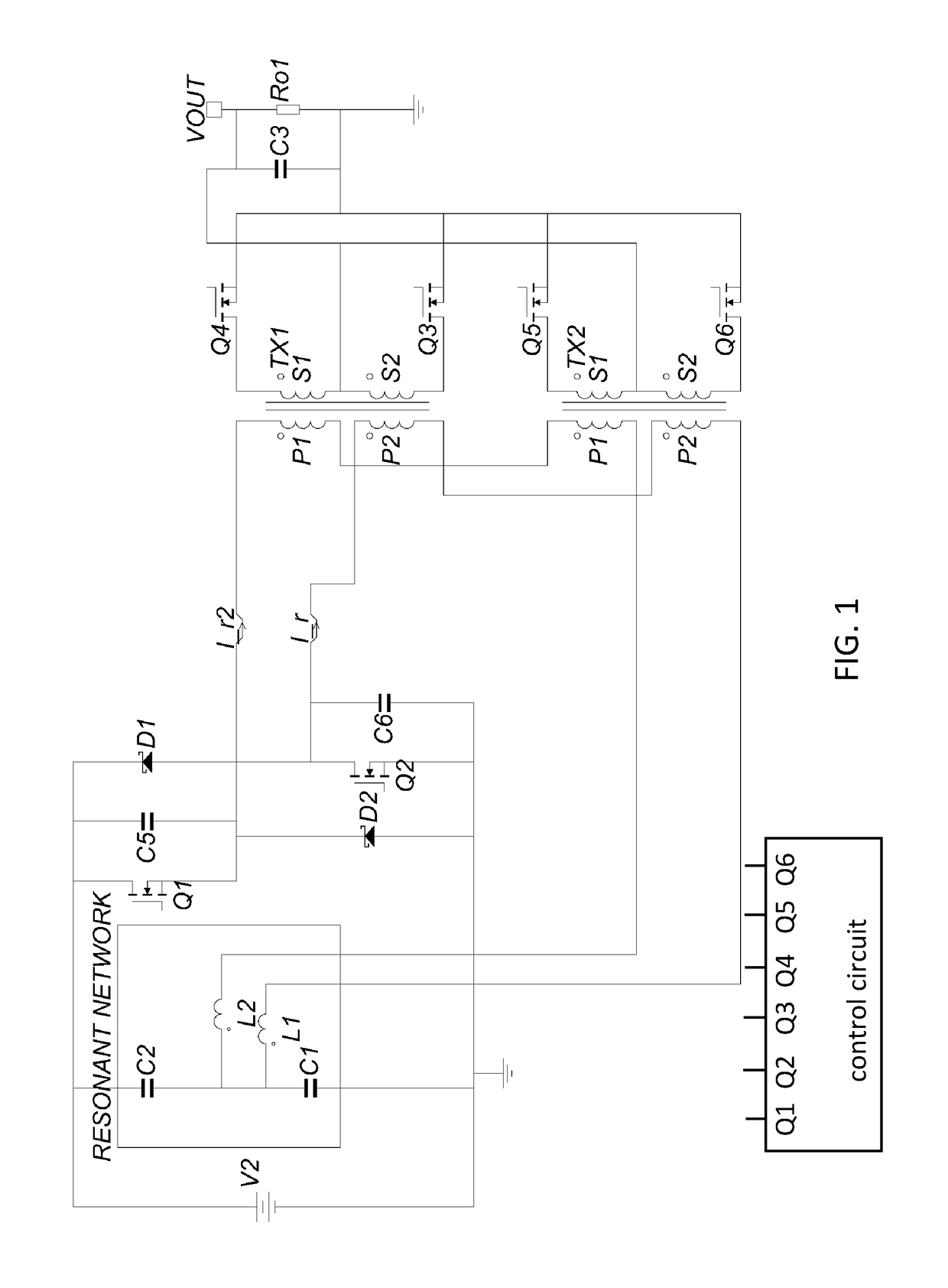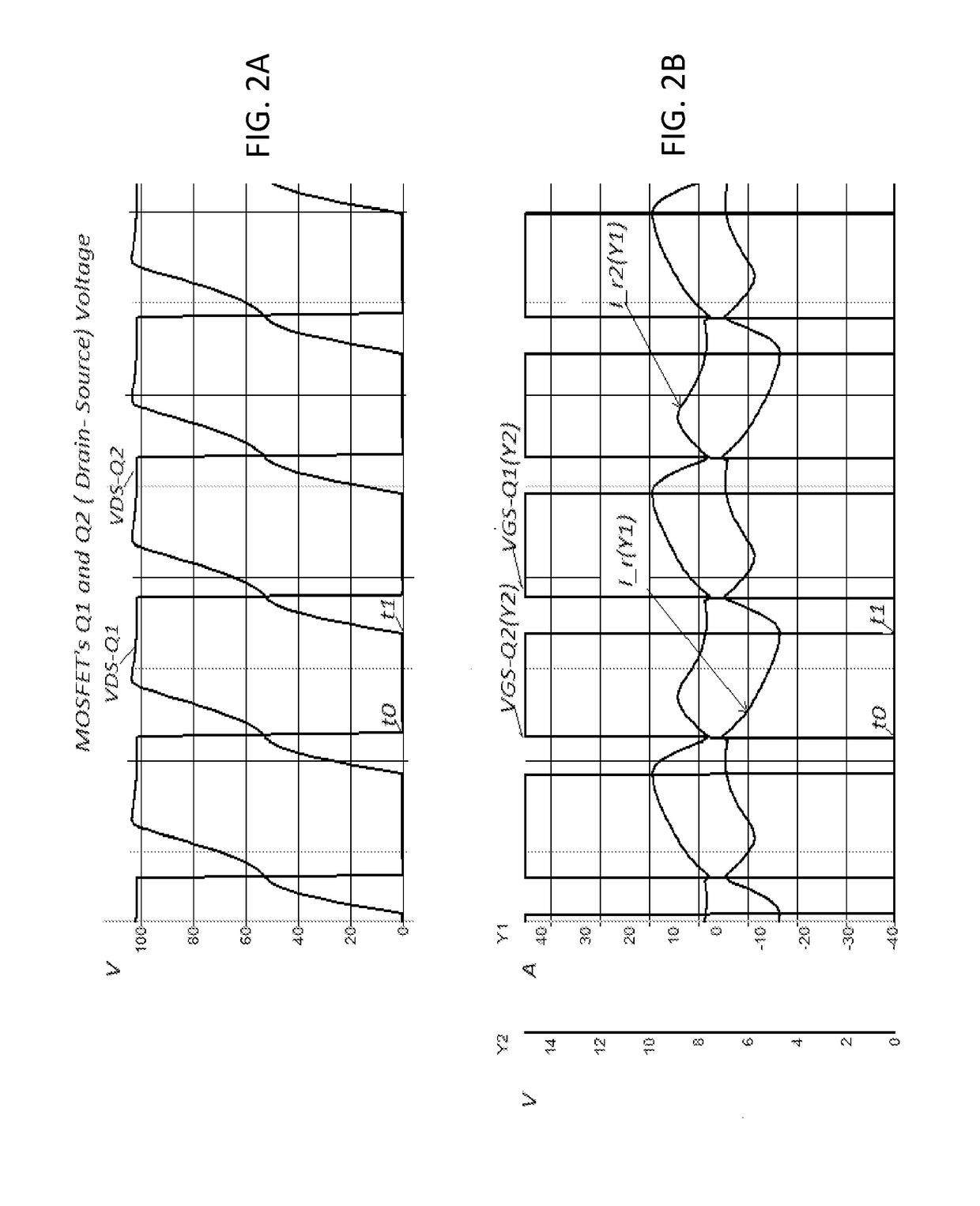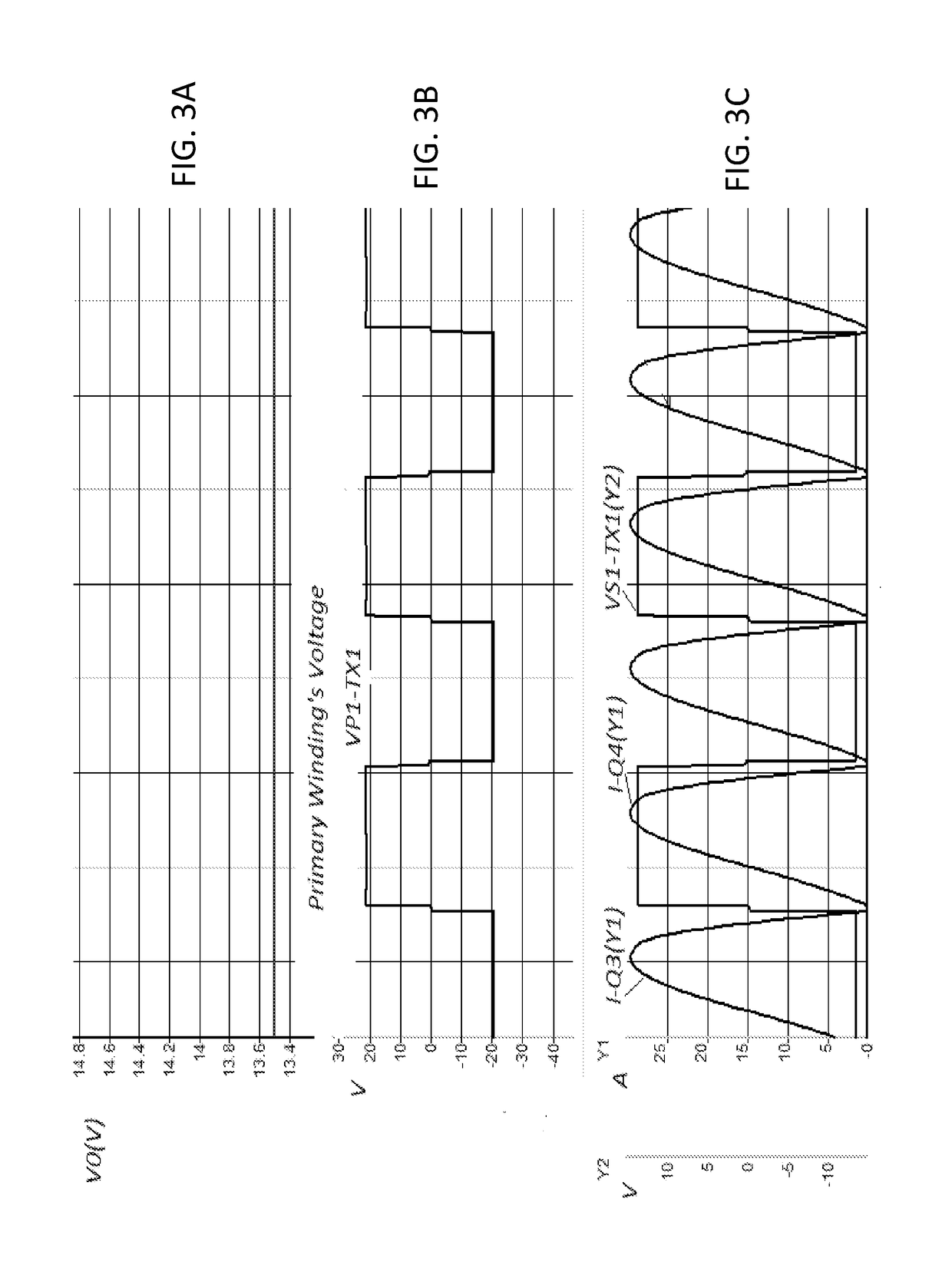Multi-transformer llc resonant converter circuit
a resonant converter and multi-transformer technology, applied in the direction of electric variable regulation, process and machine control, instruments, etc., can solve the problems of increasing the volume of the converter, limiting the operation of higher frequency, and most losses in the llc converter, so as to reduce the size of the transformer, reduce the ripple of input-capacitor current, and reduce the forward voltage drop
- Summary
- Abstract
- Description
- Claims
- Application Information
AI Technical Summary
Benefits of technology
Problems solved by technology
Method used
Image
Examples
Embodiment Construction
[0019]It should be understood that the foregoing description is only illustrative of the present invention. Various alternatives and modifications can be devised by those skilled in the art without departing from the present invention. Accordingly, the present invention is intended to embrace all such alternatives, modifications, and variances that fall within the scope of the appended claims.
[0020]The LLC converter of FIG. 1 reduces transformer size, transformer-core losses, synchronous-rectifier MOSFET losses, and MOSFET-body-diode conduction losses. The LLC converter of FIG. 1 equally distributes current to the synchronous-rectifier MOSFETs, while the two transformers have the same magnetizing and primary currents. As a result, the load current in each secondary side of the two transformers matches or is substantially the same.
[0021]As shown in FIG. 1, the LLC converter includes an input voltage V2; a resonant circuit including inductors L1, L2 and capacitors C1, C2; power switch...
PUM
 Login to View More
Login to View More Abstract
Description
Claims
Application Information
 Login to View More
Login to View More - R&D
- Intellectual Property
- Life Sciences
- Materials
- Tech Scout
- Unparalleled Data Quality
- Higher Quality Content
- 60% Fewer Hallucinations
Browse by: Latest US Patents, China's latest patents, Technical Efficacy Thesaurus, Application Domain, Technology Topic, Popular Technical Reports.
© 2025 PatSnap. All rights reserved.Legal|Privacy policy|Modern Slavery Act Transparency Statement|Sitemap|About US| Contact US: help@patsnap.com



